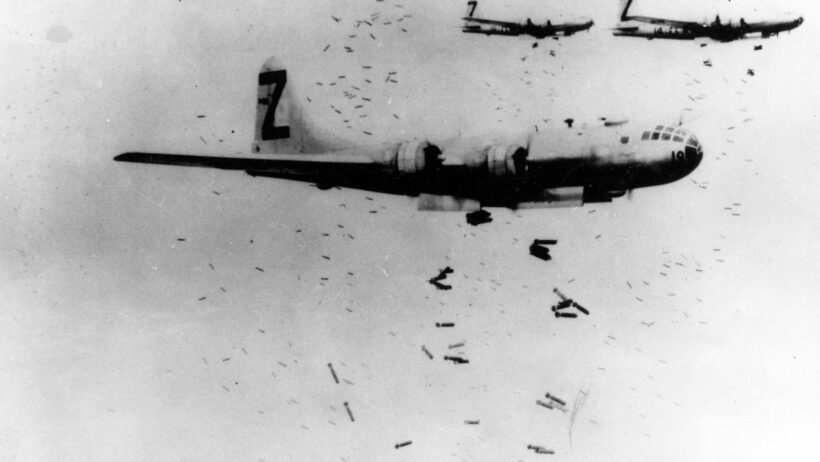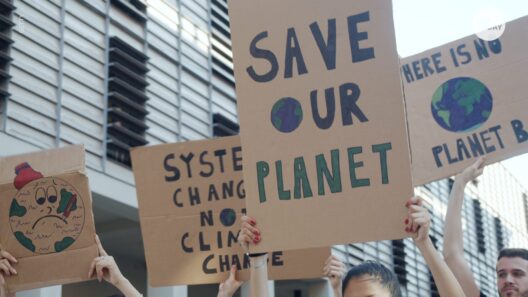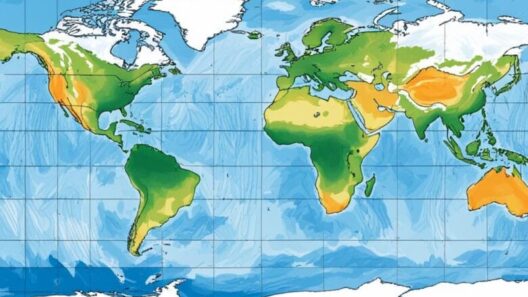The echoes of World War II resonate through history, not just in the realm of geopolitics, but also within the very fabric of our planet’s climate. The unprecedented scale and intensity of bombing campaigns during the war prompt a critical inquiry: did these military endeavors leave an indelible mark on Earth’s climate? As if dropping meteorological stones into a vast ocean, the ripples of these actions extended far beyond immediate destruction, giving rise to complex atmospheric reactions that warrant exploration.
To grasp the true significance of mass bombing during WWII and its potential climatic impact, one must first understand the global context of the period. The war represented a tumultuous time in human history, characterized by technological advancements, resource mobilization, and industrialized warfare on a scale previously unimaginable. The implications of this mobilization were not confined to battlefields but infiltrated the skies, leading to the release of various compounds that would have far-reaching effects on our atmosphere.
The scale of destruction unleashed through aerial bombardments resulted in the incineration of countless structures, landscapes, and natural resources. This cataclysmic consumption of materials meant staggering quantities of carbon-rich pollutants entered the atmosphere. The fires ignited by bombings released not only carbon dioxide but also soot and other particulate matter. As these substances settled in the atmosphere, they formed a shroud that impacted both local and global climates.
When examining climate change through the lens of WWII bombing, it is critical to unravel the intricate connections between human activity and natural systems. The bombs dropped during missions such as the firebombing of Dresden and Tokyo did more than obliterate urban areas; they ignited extensive fires that contributed to a temporary elevation of global temperatures. These pyres of destruction acted as unintended climate change catalysts, contributing to an ephemeral spike in radiative forcing—a measure of how much energy, in the form of solar radiation, is absorbed by the Earth.
The immediate aftermath of such destructive events often reflects localized phenomena, yet the perturbations reverberate across larger scales. A noteworthy example can be found in the “nuclear winter” theory, initially posited in the 1980s. Although primarily focused on the potential climatic consequences of nuclear warfare, the underlying principles draw parallels to the incendiary bombings of WWII. Experiences from those who lived through the conflagrations describe an atmosphere darkened by smoke, drastically diminishing sunlight—a harbinger of climate manipulations, albeit on a smaller scale.
Climate models have been employed to understand the effects of particulate matter in the atmosphere. Historical atmospheric conditions, altered by bombings, likely played a role in regional weather patterns. Ejecting vast amounts of aerosols into the troposphere could lead to short-term cooling effects due to sunlight scattering, combined with longer-term warming as greenhouse gases accumulated from fires burning fossil fuels and wood. This interplay illustrates a complex choreography between destruction and atmospheric dynamics.
Moreover, the war catalyzed significant advancements in meteorology and atmospheric sciences, as scientists grappled with the impacts of altered atmospheric conditions. The lessons learned during this tumultuous time underscore the delicate balance of our climatic systems. A disconcerting realization emerges: humanity, in exerting its will through warfare, set into motion processes that could alter our climate for generations. Such historical precedents remind us of the fragile web that binds human enterprise to the natural world.
As we embark on a quest to understand the implications of past actions on future climates, it is essential to refrain from myopic interpretations. While WWII bombings undeniably introduced pollutants into the atmosphere, the broader context of industrialization and subsequent climate change must be considered. The war merely exacerbated existing environmental changes fueled by industrial advances, pollution, and resource extraction. Hence, attributing today’s climate challenges solely to wartime activities risks oversimplifying a multifaceted crisis.
The legacies of WWII bombings extend beyond mere atmospheric transformations; they beckon us to reflect on how human conflict intersects with climate health. In this light, warfare emerges not just as a catalyst for immediate loss, but as an ominous reminder of our profound impact on Earth’s climate. It serves as a harrowing metaphor for the consequences of unchecked human ambition—an incendiary lesson in humility that resonates today amid the pressing discourse on climate action.
In delving deep into the historical ramifications of mass bombing campaigns, we unearth a salient truth: each action reverberates through time and space, echoing within the climate systems we strive to safeguard. Understanding the intricate dance between war and environmental change can galvanize efforts toward sustainable practices as we face unprecedented climatic threats. The scars left by the past serve as indicators, illuminating pathways to a future rooted in reverence for our planet and a commitment to healing its wounds.







